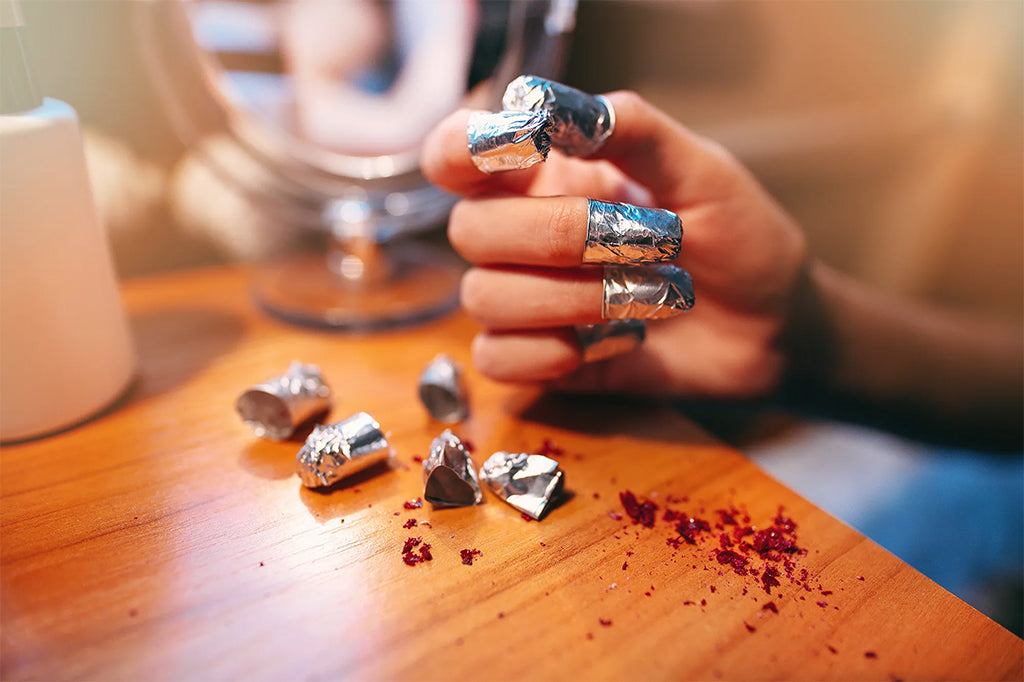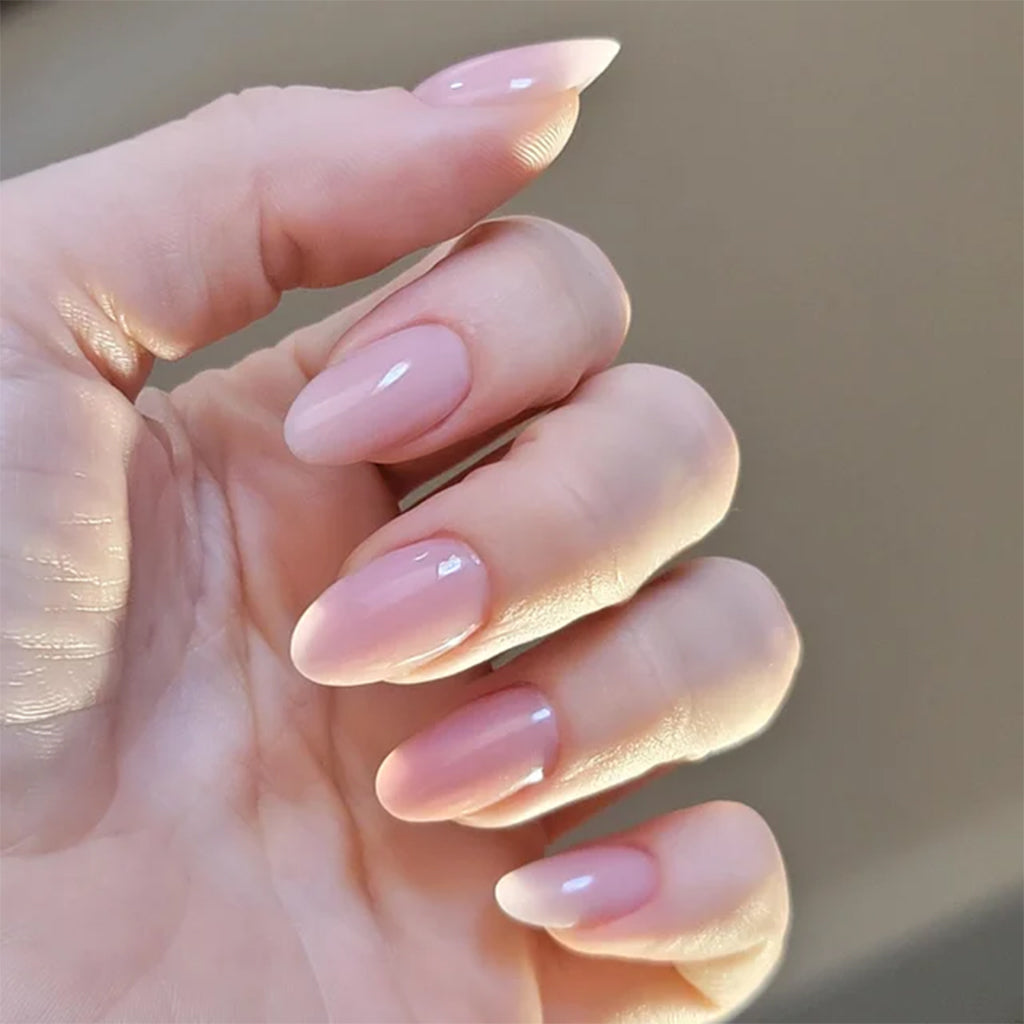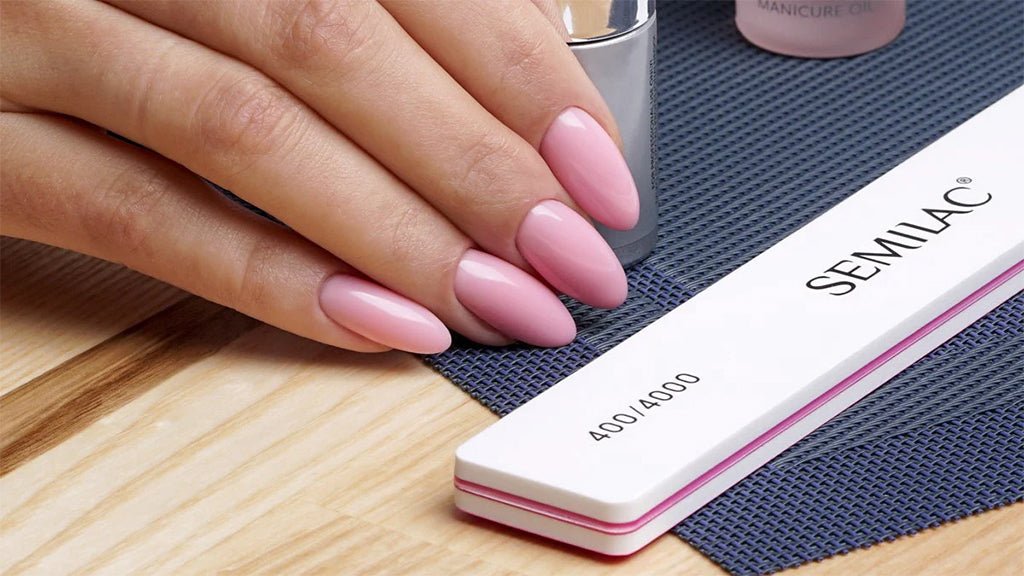How to Remove Hard Gel Nails Without a Drill?
They use a drill to take off hard gel nails at the salon. But what happens if y can’t go there? Then you need to know how to remove hard gel nails without a drill.
If you’re wondering about how to remove hard gel nails at home, the answer is to go to a professional if at all possible. That’s because not all hard gels soak off with acetone. Filing the gel down by hand takes a very long time. Plus, you’ll need to be careful not to damage the natural nail.
Nevertheless, we understand that stuff happens. (Lots of people had to cope with situations like this when the pandemic shut down salons).
Let’s talk about how to remove hard gel overlays and extensions without a drill.
How to Remove Gel Extensions?
Hard gel is hard-wearing because the molecules are packed closely together. Therefore, it’s not porous like soft gel and it’s difficult for acetone to sink in and dissolve it.
It’s unlikely that you’ll be able to soak off extensions unless the product’s instructions say it’s possible. And if you had your nails done at a salon, you might not know what brand of hard gel they applied.
What’s the solution? Well, here are the things you shouldn’t do to take off gel extensions:
- Don’t pry them off with nippers, clippers, tweezers, etc. because you’ll likely crack the natural nail.
- Don’t pick or peel them off.
Instead, grab your trusty nail file and get to work.
Supplies Needed to Remove Hard Gel Nails

Since you’ll need to remove about 90% of the hard gel before you can soak off the rest, start with a coarse 80-grit file. Later, you might want a fine-grit file or buffing block.
Also, round up acetone, cotton, and foil to soak the fingers once you’ve filed them. It’s even more convenient to use a product like foil remover wraps.
Later, you’ll need an orange stick or cuticle pusher to scrape off the gel.
Should you accidentally injure yourself a styptic solution will stop the bleeding.
Lastly, cuticle oil and hand cream are essential for repairing the dryness caused by soaking in acetone.
Steps for Removing Hard Gel Nails Without a Drill
Pick a nail to experiment with. Be gentle and take it slow until you get a feel for what to expect.
With the file, sand down the top layer of the gel until you see the colored polish starting to flake off. If you have translucent polish (like a French manicure) you’ll need to watch closely. You’ve got to file off about 90% of the hard gel, leaving only a thin layer.
Pause there and wrap the fingertip with an acetone-soaked pad and foil. This is less damaging to the skin and more effective than dipping the finger in acetone. Wait for at least 15 to 20 minutes before checking it.
Pro tip: if you suffer from hangnails, apply cuticle oil to the skin before soaking up the nail in acetone.
If the gel is crumbly, lifting, or soft enough to push off the finger with an orange stick, you’re almost done. If not, soak for 5 more minutes and check again.
Lift and scrape off the residue and shape the nail if needed. It’s okay to leave a thin layer of hard gel on the natural nail. You can fill it where it’s grown out.
Shine up the nail with a fine-grit buffing block, and apply cuticle oil and moisturizer. You can also do a manicure as usual.
What Kind of Hard Gel Soaks off with Acetone?
If your nails have IBD hard gel enhancements, you’re in luck. This brand removes with acetone. Take the shine off the surface with a file, then wrap and soak the nails for at least 10 minutes. Push the softened gel off the nail with a wooden cuticle stick and wipe the nails clean.
The Difference Between Hard Gel Nails and Soft Gels
Why are soft gels easy to remove and hard gels so difficult? Soft gel is more porous, with more space between its molecules. These tiny gaps let the acetone sink in and break down the bonds.
Is Builder Gel the Same as Hard Gel?
Hard gel is sometimes called builder gel. It also goes by sculpting or sculpture gel.
There are different types sorted by consistency or how thick they are. Some flow easily and are self-leveling and others have to be worked on. The latter type is good for sculpting.
When Should You Get a Hard Gel Manicure?
Hard gels are excellent for gel tip extensions that need to last. Moreover, hard gels can go underneath a soft gel polish. This means you can change up your manicure color without removing the hard gel underneath. All you need to do is soak off the gel polish and replace it.
Benefits of Hard Gel Nails

If you had a tough time taking off hard gel nails at home, you might be wary of repeating this type of manicure. But there are many reasons to choose hard gel over soft gel for nail enhancements.
Although hard gel isn’t as flexible as soft gel, it’s not as stiff as acrylic, plus it’s stronger. It can withstand high pressure without cracking. Still, it’s flexible enough to resist lifting. If it does start to lift, it doesn’t stray far from the natural nail and it’s easy to fix. Should it break, hard gel is less likely to crack the natural nail compared to acrylics.
What’s more, hard gel is hypoallergenic. It uses a plastic called oligomer instead of polymer. The size of the molecule makes it unlikely to enter the bloodstream through the skin. Therefore, it’s unlikely to cause irritation.
Finally, hard gel makes it easy to build all sorts of nail art forms as well as different tip shapes from square to stiletto or coffin. That’s why it’s often called builder gel.
Conclusion
Eager to learn more about nail care? Check out our blog for tips on the latest trends and lots of how-to articles. Also, see what’s new and on sale.
